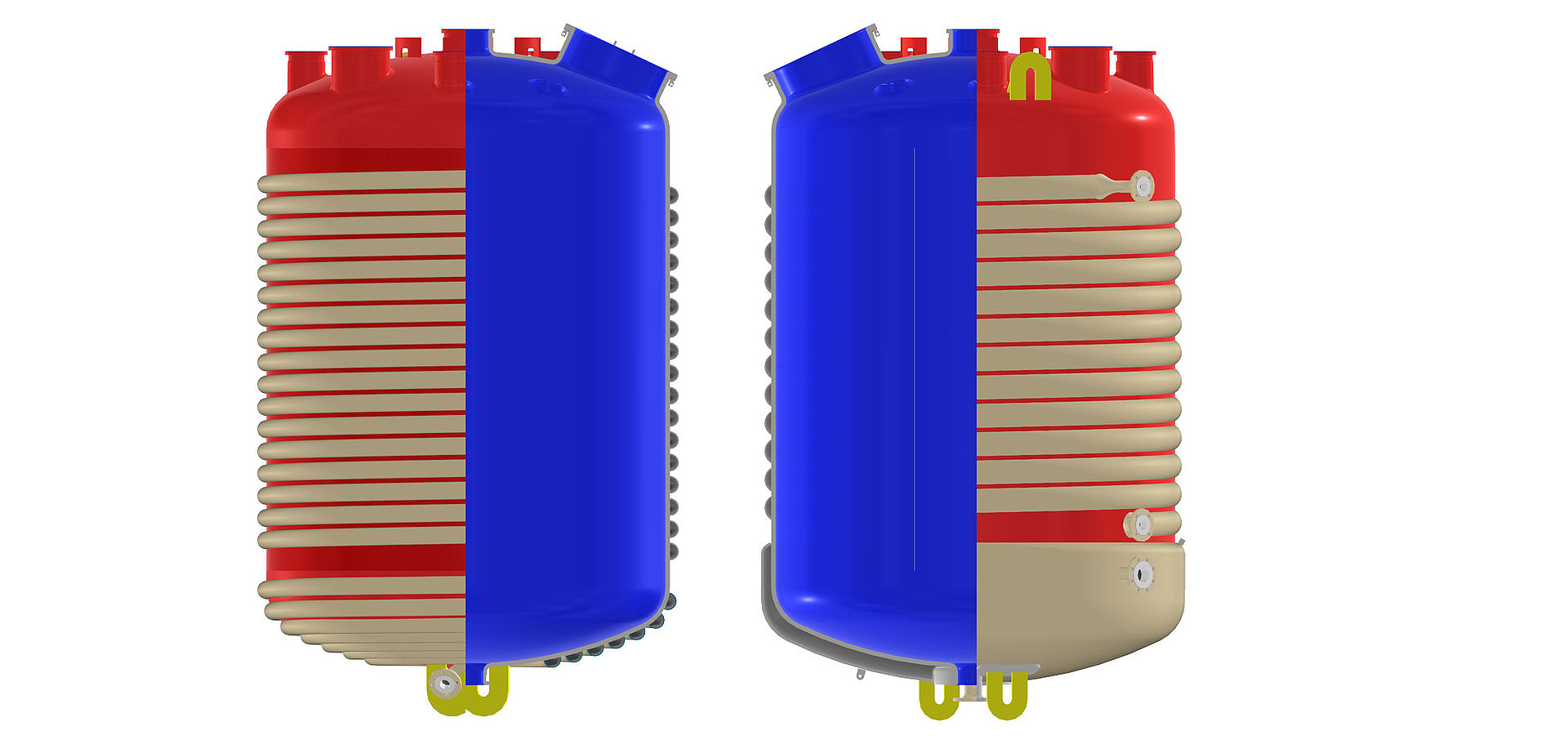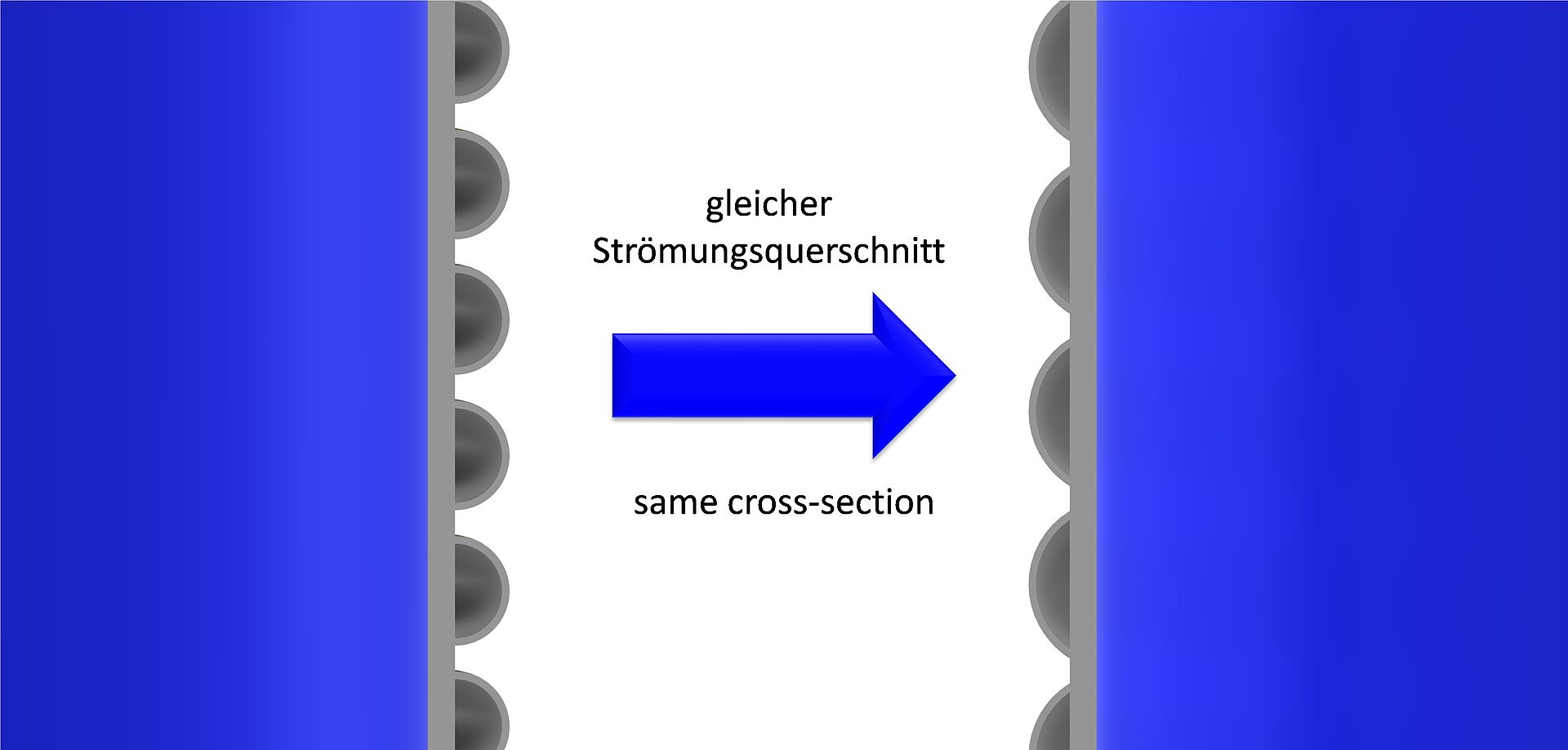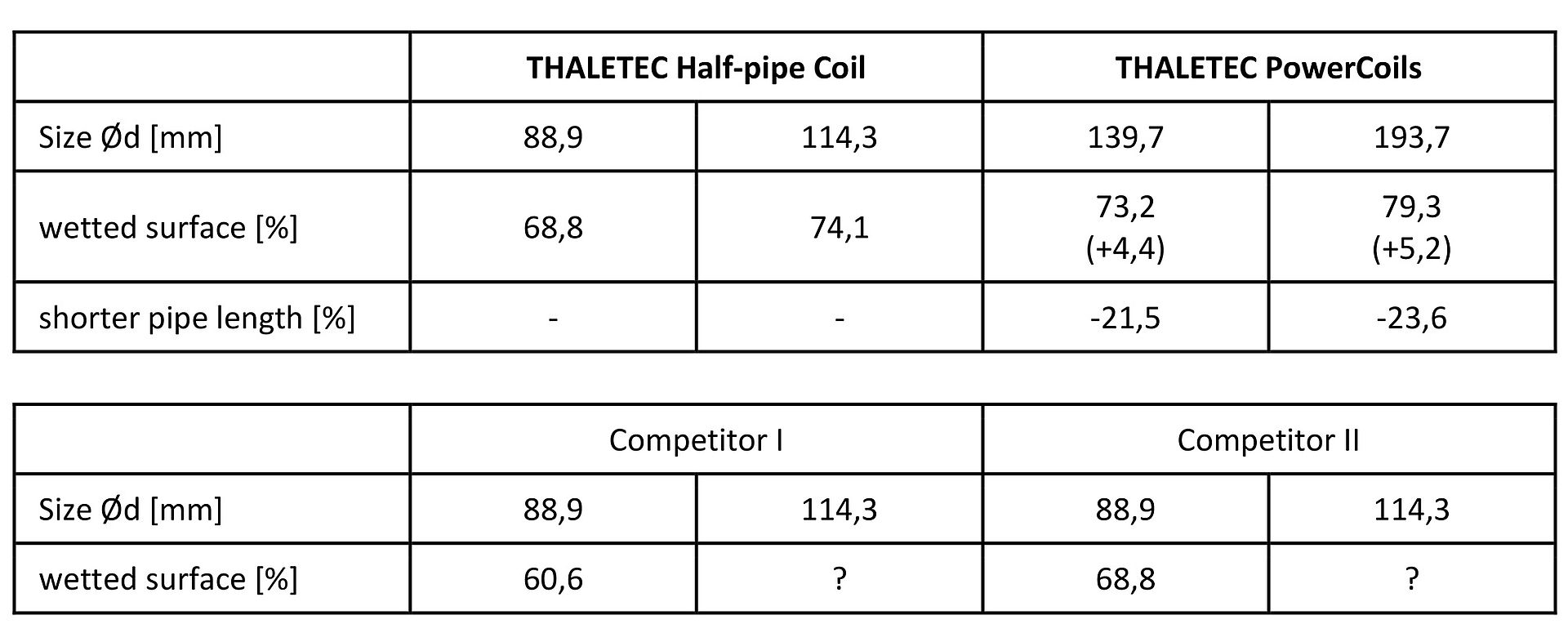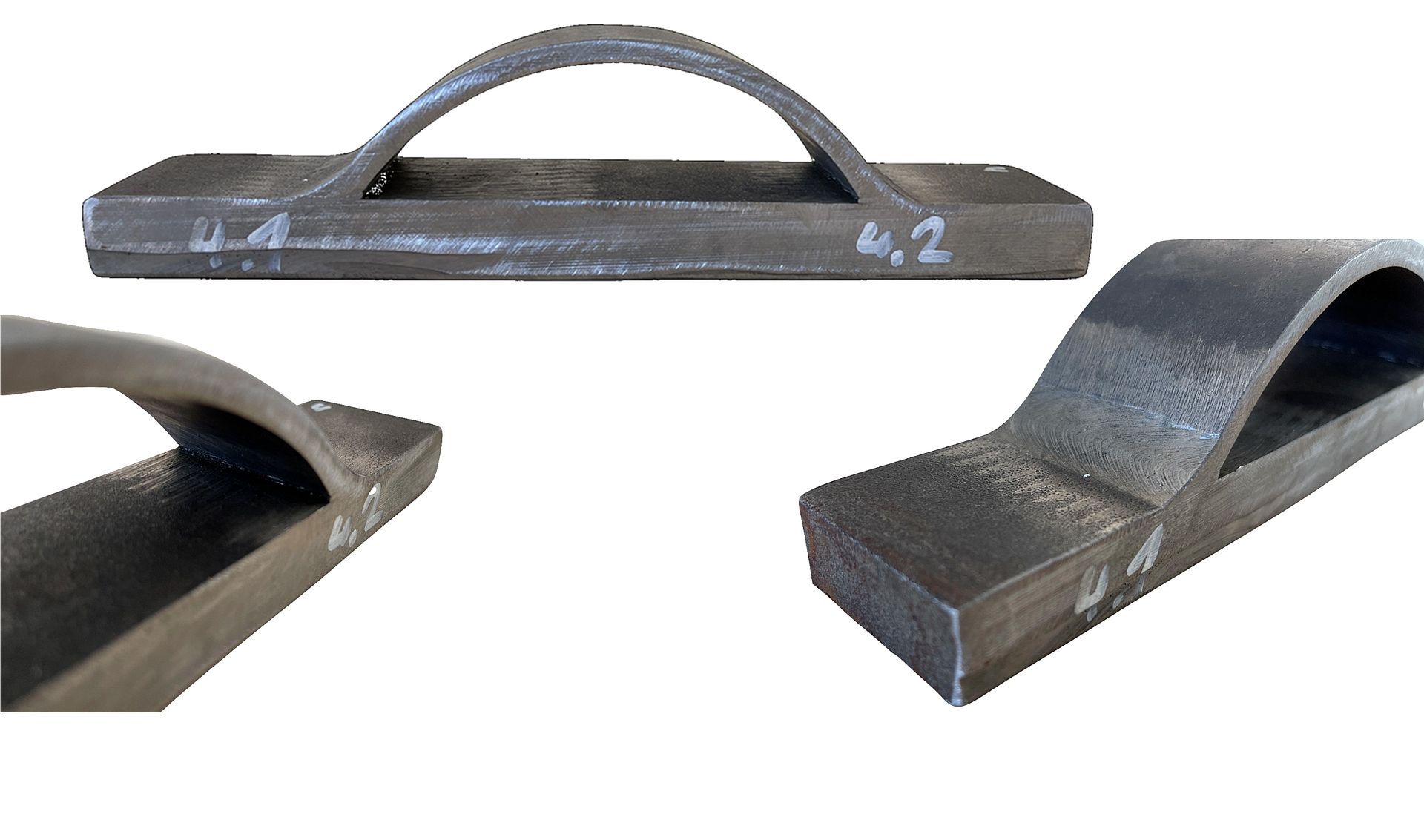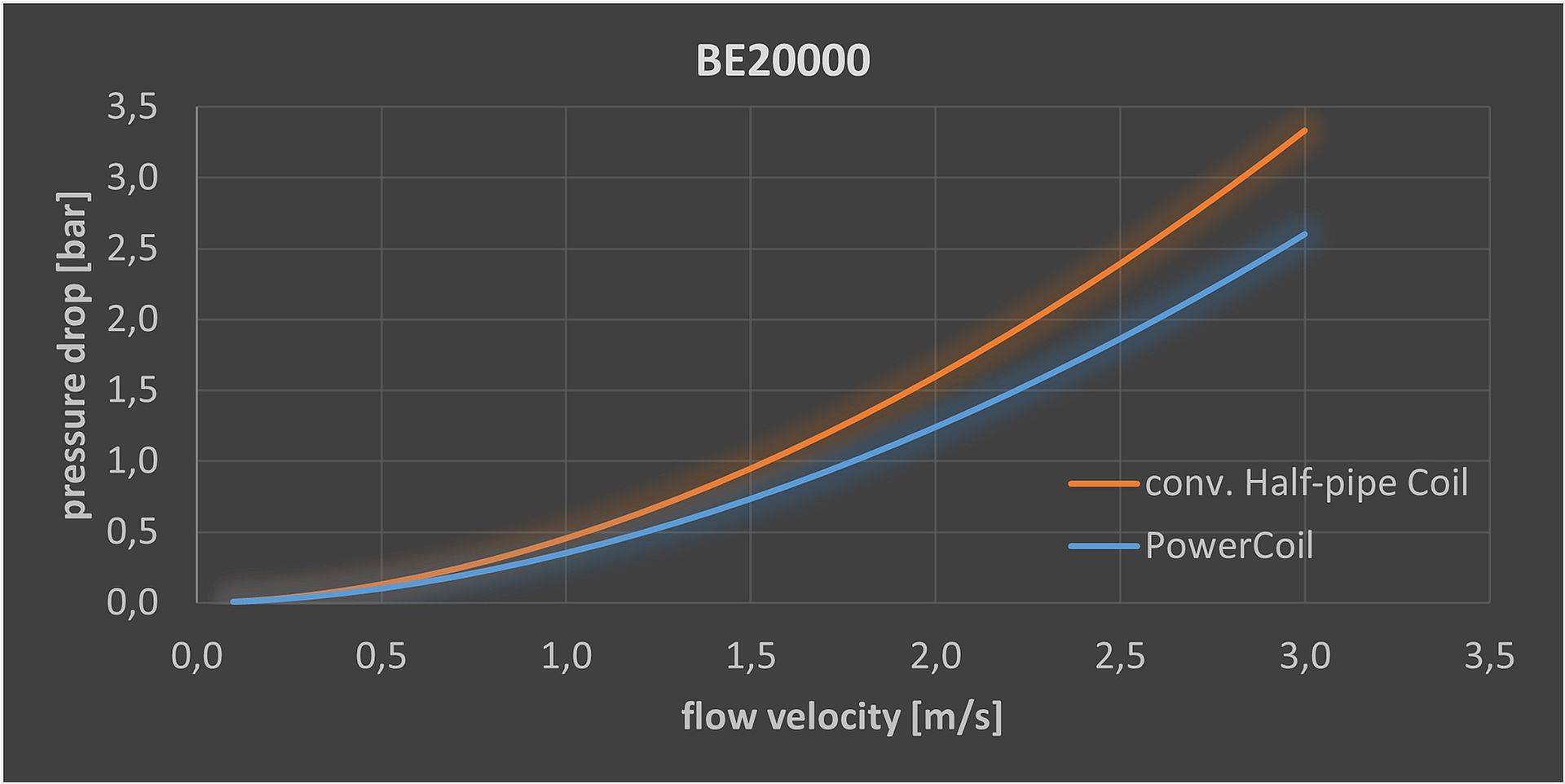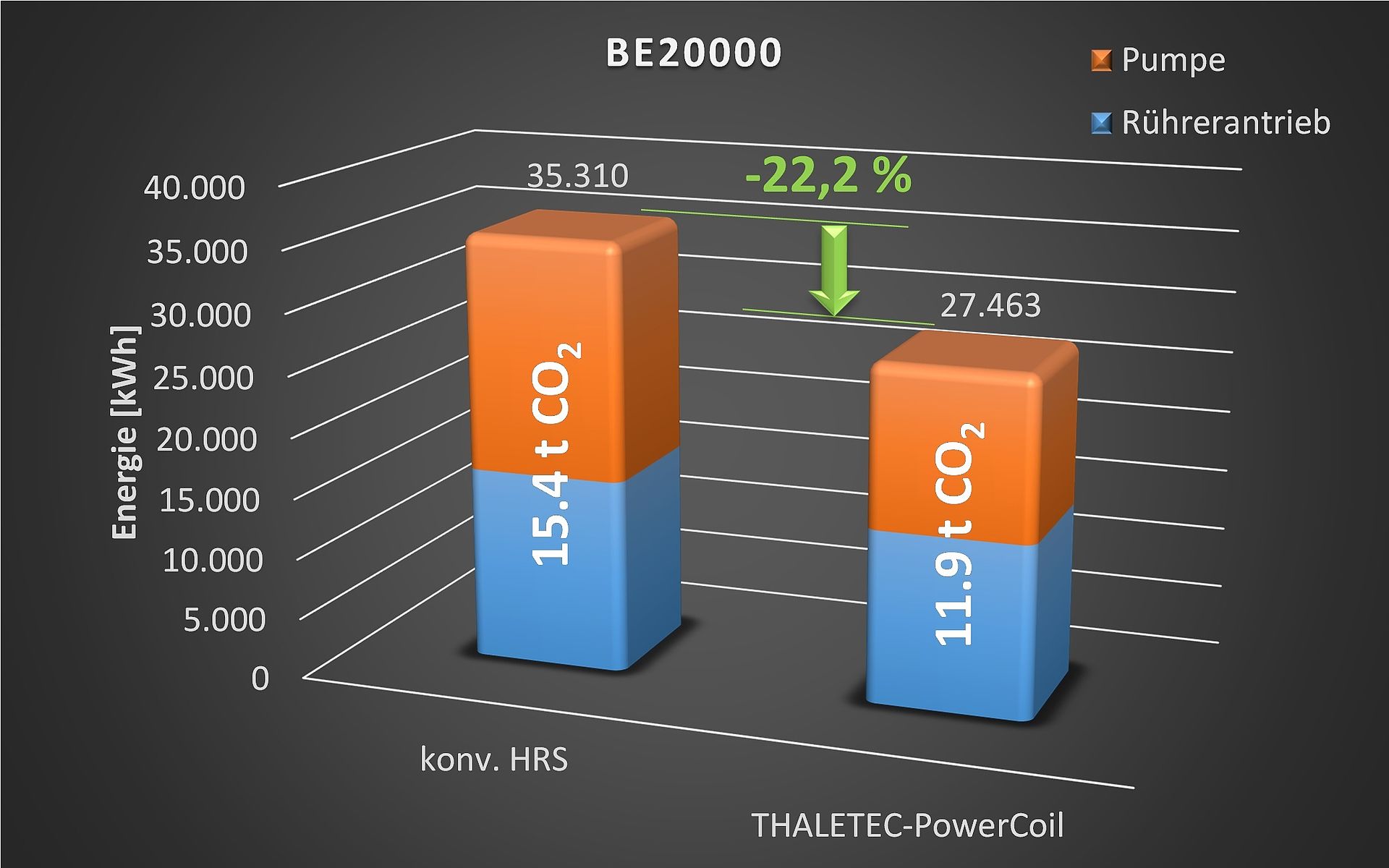THALTEC PowerCoils – Half-pipe Coils reinvented
Introduction
Glass-lined reactors have to meet a wide range of requirements in order to carry out chemical reactions safely under aggressive conditions. These include, for example, high resistance to chemical attack, very good cleanability, operation as a pressure equipment, avoidance of electrostatic charges, high productivity in a wide range of processes and optimum heat transfer. The last point in particular is becoming increasingly important in order to operate the equipment as economically as possible. Rising energy prices as well as political guidelines and regulations are encouraging companies to assume social and ecological responsibility. Energy-efficient operation essentially covers the issues of heat transfer (process time), pump energy for the service medium and the energy supply for the agitator drive.
Glass-lined reactors or stirred vessels typically have a jacket with flow nozzles or half-pipe coils as heating and cooling spaces. The available heat exchange surface is determined by the size of the vessel.
This limit can be exceeded with the THALETEC PowerBaffle (K018). The PowerBaffle is a glass-lined tube bundle that serves as an additional heat exchanger in the reactor with high-quality heat exchange surfaces as well as a baffle and temperature measuring system.
Half-pipe coils for process equipment are defined in the DIN 28128. The design and the standard date back to 1979 and have only changed slightly since then. THALETEC is now redefining the standard for half-pipe coils and offers an optimized half-pipe coil regarding several aspects under the product name PowerCoil (K174).
Design of the PowerCoils
As can be seen in Figure 1, the cross-section of the PowerCoil is not a half pipe but a circular segment. Typical sizes of a half-pipe for glass-lined apparatuses are the 88.9 and 114.3 sizes. The PowerCoil sizes (pipe sizes 139.7 and 193.7) have approximately the same flow cross-sections in terms of area, so that comparable volume flow requirements exist. The circular segment causes a larger coverage of the inner vessel, so that a larger heat exchange surface is active with the same distance between the pipe spirals. The greater coverage also means that a smaller number of spirals is required and consequently a shorter pipe length to cover the inner vessel.
PowerCoils can be manufactured from an inner vessel diameter of 1.2 m. The larger PowerCoil size 193.7 is used from an inner vessel diameter of 2.2 m. At the bottom dish, there is the option of a conventional half-pipe coil or a jacket. The second variant offers the advantages of a larger heat exchange surface at the bottom dish, more cost-effective manufacturing and the avoidance of the risk of typical stress cracks on the half-pipe coil at the bottom due to high thermal loads.
Advantages of the THALETEC-PowerCoils
Table 1 shows several advantageous aspects. Firstly, a larger heat exchange surface of 4.4 to 5.2 % compared to the conventional half-pipe coil. Compared to other manufacturers, the heat exchange surface can even be 12.6 % larger with the PowerCoils for the same apparatus size. On the other hand, the length of the PowerCoils is reduced by -21.5 to -23.6 %. This is associated with a lower pressure drop and consequently lower operating costs due to the lower pumping power required.
Table 1: Comparison of conventional Half-pipe Coils of THALETEC and competitors with the new PowerCoils
The lower height of the PowerCoils compared to conventional half-pipe coils makes it easier to access the root of the weld seam. A significantly better weld seam quality (Figure 2) and high strength are achieved. The 193.7 mm PowerCoils withstood burst tests up to 322 bar, meaning that they are many times safer than the usual operating pressures in the service spaces.
THALETEC PowerCoil – more heat flow, shorter process times and lower operating costs
To illustrate the advantages mentioned, a BE20000 with a conventional half-pipe coil is compared to a THALETEC PowerCoil with a conventional half-pipe coil at the bottom dish. Both apparatuses perform a cooling process. At nominal volume, water is cooled from 95 °C to 30 °C with river water (20 °C). The flow velocity is 2.5 m/s in the service spaces and a UFT turbine (K173) at 60 rpm is used for the mixing technology in each case. Figure 3 illustrates the maximum heat flow and the associated process times - the THALETEC PowerCoil has a clear advantage!
In terms of operating costs, the THALETEC PowerCoils also have an advantage, as this results in a lower pressure drop across the service space (Figure 4). If 24-hour operation on 255 working days is assumed, the energy consumption of the pumps for providing the service medium is reduced by approx. 4,556 kWh (19,436 vs. 14,880 kWh), taking into account the same efficiency levels. If the reduced process time due to the higher heat flow is also taken into account (Figure 3), there is an even clearer cost advantage for the PowerCoils, as the pump and agitator drive are in operation for less time (-10.7 %). A further 1,592 kWh can be saved on the pump. In the assumed example, the energy consumption of the pump is thus reduced from 19,436 to 13,288 kWh - this corresponds to a saving of 31.6 %! Similarly, the operating time of the agitator drive is also reduced by -10.7 %. In this example, the energy consumption for the agitator drive is reduced from 15,874 kWh to 14,175 kWh - a further 1,698.5 kWh can be saved (Figure 5).
Summary
THALETEC PowerCoils set a new standard in the field of glass-lined apparatus with half-pipe coils. Economic and ecological advantages are generated for the customer and at the same time plant safety is increased. It is also possible to replace existing equipment, as similar volume flow requirements exist and apparatuses with a PowerCoil have smaller outer diameters. Do you have further questions about THALETEC PowerCoils or about heating or mixing technology in general? Simply contact us by e-mail at process@thaletec.com




